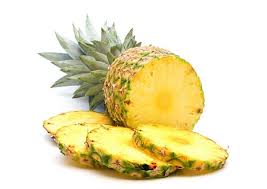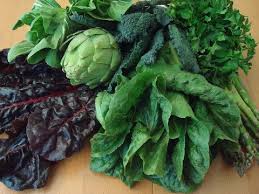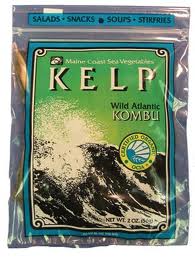An overwhelming majority of us, 85% of adult women, have cellulite and Dr. Oz is convinced that we can easily do something about it and get actual results. Fortunately for him, cellulite is not an affliction, (did I really just call cellulite an affliction?), but he knows that most of us have it and hate it so his experts have practical, surprising advice for us (and I am including myself here when I say “us”). These tips will benefit our health in other areas too so let’s let our cellulite lead us down the path to good skin, good health and less dimples….
 On a recent Dr. Oz episode, experts and medical professionals were called in to give simple, inexpensive answers to cosmetic issues that many resort to plastic surgery to correct. Dr. Erin Gilbert, a New York-based dermatologist, explained that when cellulite is present (and if you’re reading this, it is most likely is present), the quality of the skin overlying this puckered fat determines how much cellulite shows through. As the top layer of the skin degrades and thins with age, the amount of collagen and hyaluronic acid decreases in the skin, and, horrors, the cellulite appears even worse. Apparently eating certain foods can help! Naturally, these foods are plant-based and easy to incorporate into our diets and that’s what is so intriguing!
On a recent Dr. Oz episode, experts and medical professionals were called in to give simple, inexpensive answers to cosmetic issues that many resort to plastic surgery to correct. Dr. Erin Gilbert, a New York-based dermatologist, explained that when cellulite is present (and if you’re reading this, it is most likely is present), the quality of the skin overlying this puckered fat determines how much cellulite shows through. As the top layer of the skin degrades and thins with age, the amount of collagen and hyaluronic acid decreases in the skin, and, horrors, the cellulite appears even worse. Apparently eating certain foods can help! Naturally, these foods are plant-based and easy to incorporate into our diets and that’s what is so intriguing!
 Tomato Paste: 2-5 tablespoons per day
Tomato Paste: 2-5 tablespoons per day
Tomatoes contain lycopene, which is a phytochemical found in various red fruits and vegetables. Not only is lycopene thought to help prevent certain cancers and shown to reduce UV-induced sun damage, but it has been shown in a recent study in the British Journal of Dermatology to prevent collagen breakdown. According to Dr. Gilbert, you would have to eat 15 tomatoes a day to get the amount of lycopene needed to strengthen your collagen and see an improvement in the appearance of cellulite. Eating 2-5 tbs of tomato paste would be comparable. It seems to be common sense that getting this boost of lycopene everyday would benefit more than just the collagen in the skin in the southern regions of the body where most people’s cellulite resides. Perhaps the facial and neck skin where collagen breaks down and sun damage is present would also benefit!
 Pineapple: 1/2 cup per day, 1 1/2 hours after dinner
Pineapple: 1/2 cup per day, 1 1/2 hours after dinner
Pineapples contain bromelain, which is a phytochemical consisting of complex mixture of enzymes and is an anti-inflammatory. Inflammation is the source of many diseases and reducing it can have benefits on cellulite as well. It also prevents the breakdown of collagen in the skin. Dr. Gilbert explained that bromelain also boosts fat cell metabolism, where fat is released from existing fat cells. The highest concentration of bromelain is actually found in the stem of the pineapple but it is also present in the fruit. She warns that drinking pineapple juice is too high in sugar so it’s best to avoid it and eat fresh. A supplement of bromelain of 500 mg per day will also provide enough to see results.
 High Water Content Fruits & Leafy Greens Vegetables: 2-5 cups per day
High Water Content Fruits & Leafy Greens Vegetables: 2-5 cups per day
Skin turgor is the skin’s natural elasticity. You can test your skin’s turgor by pinching the skin on the back of your hand and observing the time it takes to return to normal. Skin with normal turgor returns back rapidly and this is what we want! Drinking adequate water is essential, of course, but eating fresh leafy greens, fresh fruits and vegetables with a high water content and low calories, particularly melons and cucumbers, prevent decreased turgor in the skin. Your skin will experience better elasticity and this will improve the appearance of cellulite.
 Flaxseed: 2 tablespoons per day
Flaxseed: 2 tablespoons per day
Flaxseed supports estrogen levels and boosts collagen growth. As we’ve learned, collagen-strong skin reduces the appearance of cellulite!
As Dr. Oz recommends, “Kelp contains fucoxanthin, a xanthophyll compound found in green plants with chlorophyll, which helps the body burn fat. Studies show that ingesting kelp can help facilitate a 5-10% loss in body weight, thus reducing the appearance of cellulite. Add kelp to your diet regimen. You can purchase dried kelp for about $7; try adding it to miso soup or crumble it into stir-frys and salads. Or, you can get your kelp in 300 mg capsule form (about $10 a bottle) at your vitamin store”.
So that’s your Supermarket Prescription for reducing cellulite, along with doing regular exercise, sticking to low-salt, low-sugar, low-fat, whole grain and unprocessed foods. Plant-based too, I might add—you know the drill! I’m going to test out these tips and I will certainly report back to you. Don’t expect to see any before or after photos, though! That’s where I draw the line!
For more information on this Dr. Oz episode, Click Here.
For more information about Dr. Erin Gilbert, Click Here.
xox Ellen











Going to the market NOW to buy these foods!
I figure if I can’t see the back of my legs then I DON’T have cellulite! But I am going to increase my tomato paste intake just because I love tomatoes!!!!!!!
Yup, I agree! I can’t see the back of my legs either! But I’ll stick with the tomato paste too.
Those 360 degree store mirrors are the worst! I went and bought tomato paste, fresh pineapple and bromelain capsules. I’ve got kelp and I eat lots of leafy green veggies and melon already so I will be part of the experiment. I’ve got to drink more water. I’m hoping to see an overall positive affect on all my epidermis!!
Thanks for posting this. I love Dr. OZ but can’t always catch his show. I will test out these tips as well… I am eating healthier and losing weight, but hate my thighs at this point…grrrr…
Our pleasure! Thanks for reading and visiting our website! Every woman hates their thighs, don’t they? Keep up the healthy eating.
I’m trying to do all these tips because thighs are my issue too. At least fat in the thighs will be something I can live off of if I’m stranded on a desert island!